The content of the article
How to grow eggplant in open ground? Those who have been gardening for a long time, probably already know all the secrets of this thermophilic vegetable. Beginners sometimes make mistakes. Therefore, their eggplant does not grow well.
Let's analyze a step-by-step strategy, starting from seeds and ending with full-fledged fruits.
Where to plant eggplant
Land for planting begins to be prepared in the fall. Choose a sunny place that is not blown by drafts. It is advisable to observe crop rotation and not to plant eggplants after other nightshade crops. The soil must be made light, loose, but fertile. To do this, make fresh manure, peat, dolomite flour and sand.
Soddy or clayey is added to the sandy ground. Then all this is carefully dug up in the winter. In this case, all visible weed roots are selected. The fact is that eggplants grow very slowly at first. Therefore, weeds overtake them. So this will have to follow.
In the spring, well-rotted compost is added to the beds, they are again dug up and harrowed. So that the soil warms up faster, it is covered with a dense black film or non-woven material, leaving seedlings until the very day of planting.
Tip. In the fall, when digging, do not break large lumps. So frost in winter will be able to get to the pupae of pests and weed seeds.
How to prepare eggplant seeds for sowing
This culture rises for a very long time. In order to reduce time, you need to properly prepare the seeds. To start, choose a variety. It must be zoned in your area. Ripening dates are chosen early, otherwise the fruits can never wait until the frosts. Because the standard eggplant vegetation cycle is about 160 days.
After selecting seeds, they must be etched. Pathogenic bacteria and pathogenic fungal spores may be present on the membrane. Destroying them is very simple. It is necessary to prepare a hot (not higher than + 50 ° C) maroon potassium permanganate solution. Dip the seeds there and leave for 18 minutes. This time is quite enough to destroy the entire infection.
Now you need to recharge the eggplant seeds. That is, add some energy to their own life forces. To do this, make a warm (+ 38-40 ° C) solution of any adaptogen, and planting material is placed in it for 8 hours. It can be aloe juice, zircon, epin.
After charging, take a plate or container. A flap of cotton cloth or several layers of loose toilet paper are placed at the bottom. Gauze will do. Eggplant seeds are spread on this pillow, covered with a second layer of fabric or paper. From above, the entire contents of the container are slightly moistened, just a little. Then they put in a dark warm place.
The design should be checked every day. If necessary, slightly spray with warm water from the spray gun. At about 4-5 days, the seeds will begin to hatch. Now they can be sown.
Tip. Do not close the plate or container tightly. Mold may appear and ruin all your labors.
How and when to plant eggplant for seedlings
Eggplant planting times vary by region. Landing time is easy to calculate. Plants are planted in open ground at about the age of 27-29 days. Plus time for soaking (5 days), plus 3 days for seedlings. Simple calculations show 35-37 days for everything.
It is customary to plant eggplants at the time of mass flowering of dandelions.Knowing this time in your region, you can easily calculate the start of work with seeds. For example, dandelions bloom around May 20. Less 35 days, it turns out April 15th. That's about this time and start agrotechnical classes.
Tip. Do not rush to sow eggplants ahead of time. Overgrown seedlings do not take root well and are sick for a long time.
How to sow eggplant? Yes, like tomatoes. To a depth of not more than 1.2 cm. The soil is pre-frozen in the street or in the freezer, then spilled with a very hot solution of potassium permanganate. Sowing can only be done 12 hours after processing.
You can simply spread the hatching seeds on the surface, then sprinkle them with loose soil. From above, all this stuff is slightly moistened and cleaned in a dark, warm place. After about 3 days, the first shoots should appear. Do not wait for the rest. It is urgent to take the containers to the light, but keep the temperature not lower than + 20 ° С.
Even better would be to immediately sow eggplant in separate containers. Because they don’t really like a pick. At least two or three seeds in a glass. So the plants will get more light than with thickened plantings. And they will not reach up.
Tip. You can plant eggplant in peat tablets or glasses. Then, when transplanted into open ground, the root system is practically not damaged.
How to care for eggplant seedlings
In general, one must constantly remember that eggplant loves heat. Throughout the growth time. This is an immutable rule. Otherwise, young plants do not require any unusual conditions.
Regular ventilation and watering with warm, well-maintained water, that’s all that eggplant needs before planting in the ground.
The only requirement: after the appearance of the first pair of true leaves, the eggplant needs to be carefully fed. To do this, take any complex mineral fertilizer and carefully read the manufacturer's instructions. Then they are strictly followed.
And further. Try not to overdo it with nitrogen. The plant will quickly grow green mass, but the flowers can not wait.
Tip. Do not increase fertilizer dosage ever. Burn the root system completely.
How to plant eggplant seedlings in the ground
There are also no scary secrets or military secrets. Mark the rows at a distance of 50 cm. Using an improvised tool, make holes in 25-30 cm. A liter of warm water is poured into each well. Immediately in the liquid they carefully place seedlings together with a lump of earth.
At the same time, the eggplant should already have at least 5 true leaves. After immersion, a hole near the trunk of the plant is covered with loose soil. Top can be mulched with peat or sand. Old sawdust will also work. Only they must lie on the street for at least 3 years.
The first 5 days, eggplant is shaded from the scorching sun with a light cloth, non-woven material or plywood shield. Then the shelter can be removed.
Tip. Do not rush to fill eggplants now. Better to spill them well under the stem with a root solution once.
How to care for eggplant
A plant in the nightshade family. So caring for it will not be much different from caring for tomatoes. Regular shallow cultivation, weeding - this is true for most garden crops. Eggplant is no exception.
It is not necessary to form a plant. It is better to pinch the crown of the central shoot once at a height of about 33 cm. If you remove stepchildren and others like them, then a decent proportion of the crop is lost. Indeed, on one bush, up to 22 fruits of varying degrees of ripeness can ripen simultaneously.
In order for the eggplant to be able to produce such a quantity of the crop, it needs to be fed. Do it about once every 12-16 days. It does not matter what type of fertilizer is used. Eggplant responds equally well to organics and mineral water. Just don't give too much urea. Let it be a phosphorus-potassium mixture, infusion of mullein, bird droppings, liquid green fertilizer.
Water the eggplant with strictly warm water. It is advisable that it be drip irrigation or under the root. Sprinkling is too wasteful.
Sometimes, during the cool summer, you need to remove all the lower leaves on the plant to the first ovary. So the eggplant will be easier to ventilate and will not pick up any infection.
Some sources recommend fencing beds with eggplant, because the plant does not like drafts. Just do not need to fence anything. It will be enough to plant tall plants nearby as a backstage. Of course, excluding the south side. By the way, where are the drafts in the open ground? No doors, no window panes ... All this is nonsense. There should be plenty of light and heat, and spit out eggplants on the drafts.
But what plants are sensitive to is elevated temperatures. When the thermometer reads above + 28 ° C, the ovaries are pollinated only partially. The result is ugly fruits. If the thermometer shows above + 35 ° C, then the eggplant can simply throw off the ovaries.
Sprinkling will help here. The procedure helps to lower the temperature. Or you have to shade the plants so as not to lose the crop.
Eggplant Pests
Many sources are silent about the special love of Colorado beetles for eggplant. Sometimes mention in passing. But insects respond to the plant as a drug addict at a dose. They overcome any obstacles in order to only get to the treasured bush.
In just a few hours, there are not even any stalk twigs left from the eggplant. Beetles eat the whole plant, along with leaves and flowers.
What to do? Do not give up. There are 3 scenarios:
- Have to use insecticides. Anyone working against the Colorado potato beetles is purchased and plants are sprayed. Here it is important not to guess by the time of flowering, otherwise poison insects and beneficial. It is better to play it safe and spray the eggplant until the buds open. Sometimes two treatments over the summer are enough.
- Collect enemies manually. Doable if 5 bushes are planted. With a large number of plants, you will literally have to live in the beds, because Colorado beetles will attack in droves. Without exaggeration.
- The use of infusions and decoctions of aromatic herbs or flowers. Marigolds, mint, tansy, pine, valerian. Choose any plant from non-toxic, but with a strong own smell. Pour boiling water for several hours. Then strain and spray planted eggplant.
It is necessary to impregnate plants with a third-party aroma constantly. The smell quickly disappears, and the Colorado beetles will again find a treat.
By the way, only one source advised sprinkling eggplant with plain wheat flour mixed with ash. Proportions of 1 to 1. Preferably, wet leaves for better adhesion. There is no reliable information; scientific methods have not verified effectiveness. But reviews say the method works. Colorado beetles do not disappear at all, but they become fewer at times.
If you wish, you can first try to use such a powder on several plants. It works, so you can powder on all landings.
Tip. Do not throw out slurry and the raw materials remaining after insisting. They, too, can be laid out in the aisles, let them stink and scare away pests.
How to grow eggplant in open ground? As you can see, there are no secrets in this knowledge. The right choice of seeds, competent care and protection from pests - these are all the difficulties of agricultural technology. Growing eggplant yourself is easy!
Video: the secret to growing eggplant


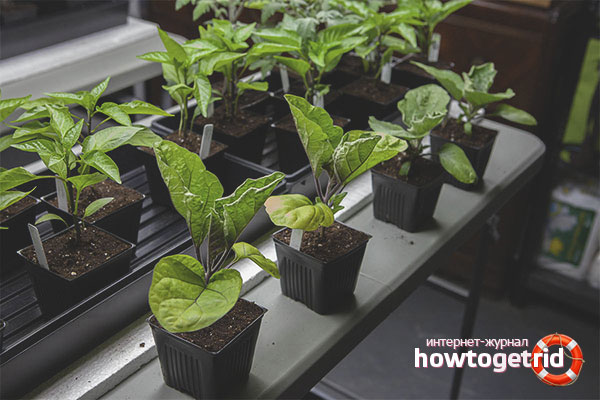
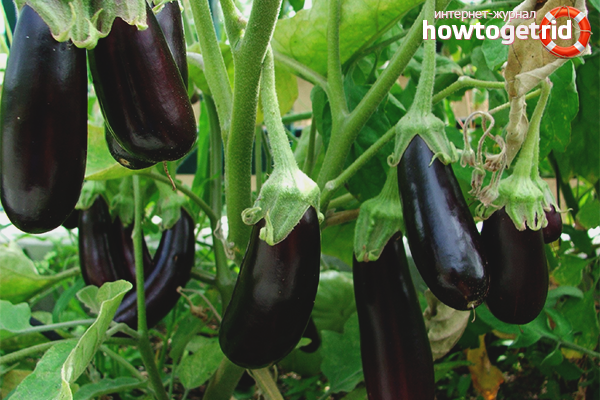
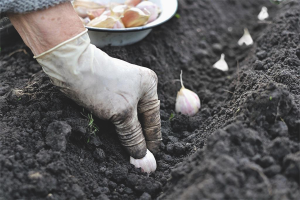
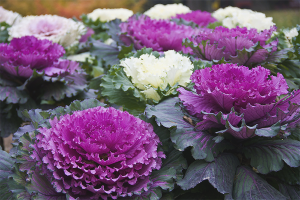

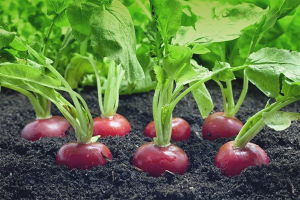
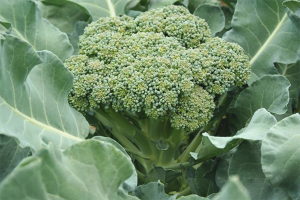



Submit